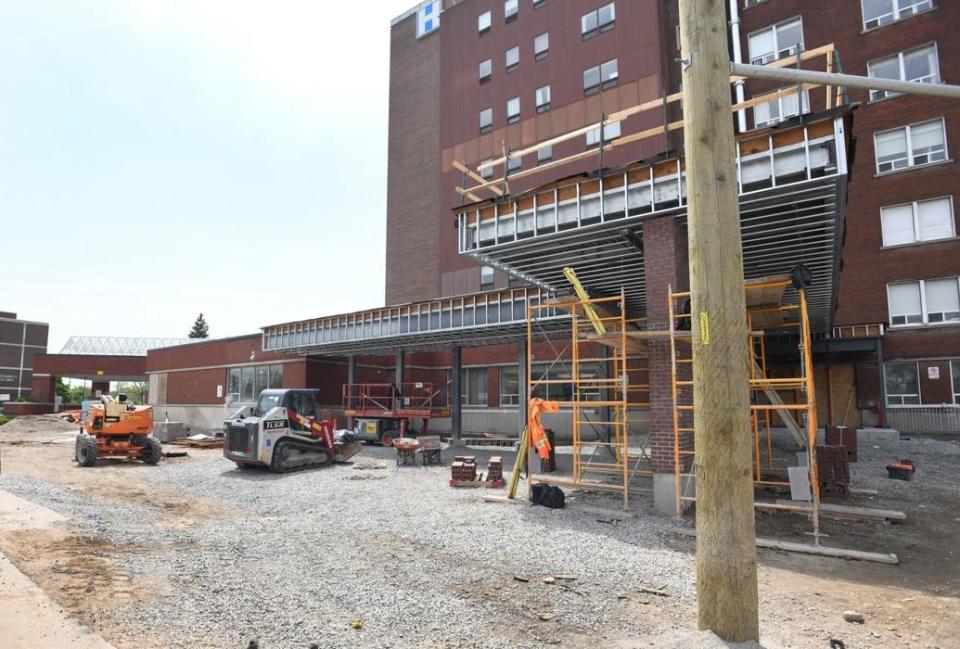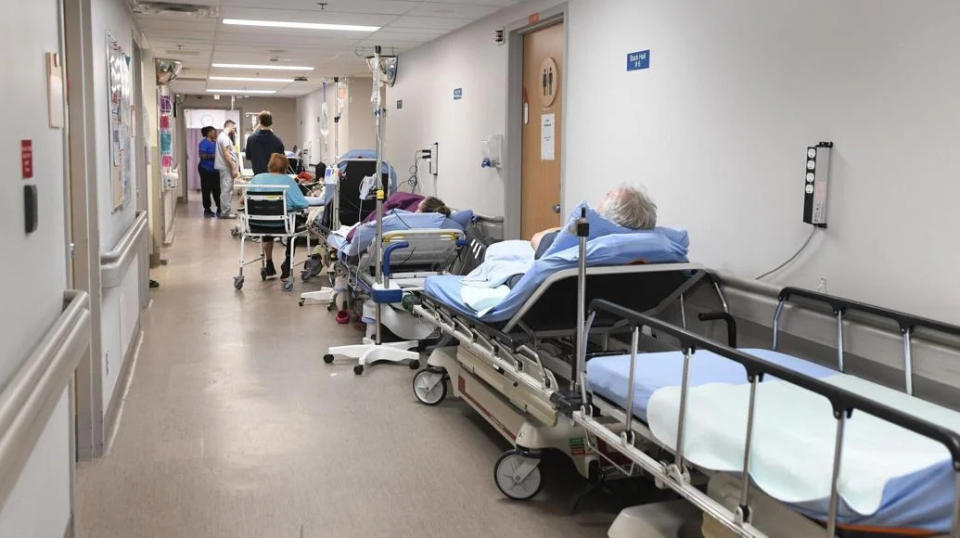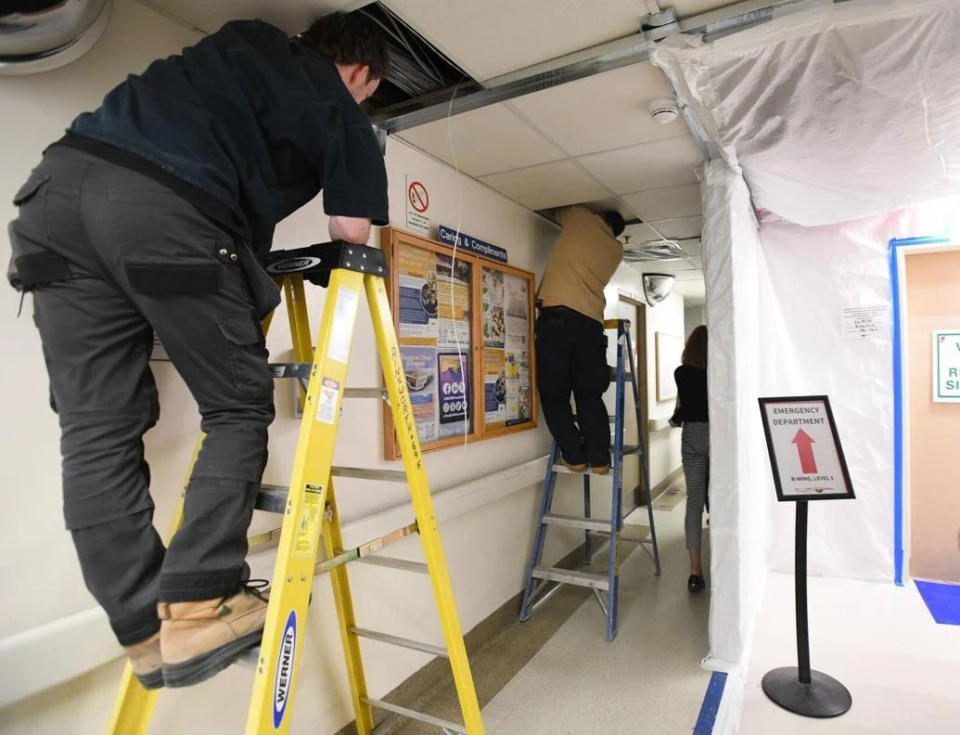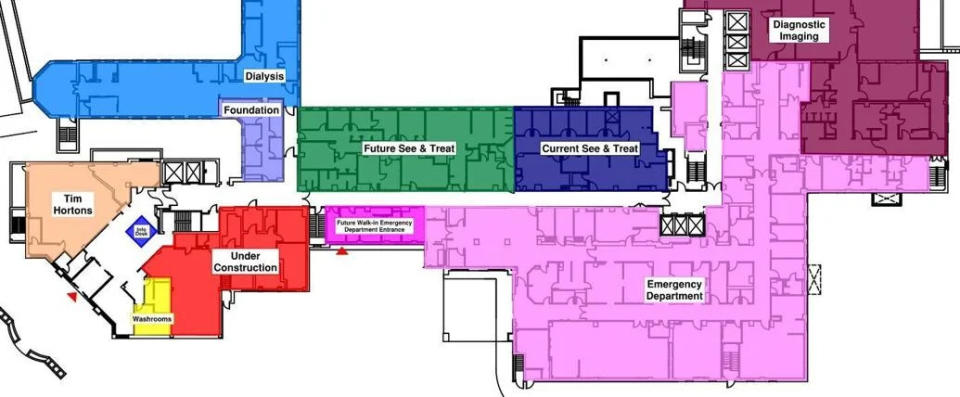Behind the scenes at Brantford General Hospital’s emergency department
“Today’s a good day.”
That’s what Dr. Somaiah Ahmed, chief and medical director of emergency medicine for the Brantford General Hospital, told The Spectator on a recent tour through the emergency department.
Around noon on a Tuesday in May, there were approximately 70 patients in the emergency department, 19 of whom were waiting to be moved to the appropriate in-patient bed for care.
There are 25 official beds in the ED — the larger hospital has 330 — and when patients are ready to be discharged, but can’t move to a suitable care setting in the community (such as long-term care), it can contribute to emergency department waits, Ahmed said.
Even still, there was no EMS backlog.
Other days are more challenging.
With aging infrastructure, a lack of space to expand, and rapid population growth in Brant, the emergency department has been challenged to keep up.
Falling under the umbrella of the Brant Community Healthcare System (BCHS) — which also includes the Willet urgent care facility in Paris — the BGH is the only hospital for Brantford and Brant County. It serves residents from both municipalities as well as Six Nations of the Grand River and Mississaugas of the Credit First Nation.

The Brantford General ED had 50,631 visits in 2023, averaging 138 per day, according to a hospital presentation to Brant councillors in May.
Common driving factors for visits are chest and abdominal pain, breathing trouble, severe ear and throat pain, or mental-health crisis.
On top of that, patients presenting at the ED are sicker than in previous years, translating to “more time, more energy, more resources,” Ahmed said.
She pointed to the growing number of residents without primary care — or those who have a family doctor but can’t get an appointment — meaning seemingly benign conditions may progress unnoticed before someone ends up in the hospital.
Compounding that, the hospital’s catchment area has the second-highest rate of opioid-related hospitalizations in the country, Ahmed told Brant County councillors in April.
Despite this, ED staff came across friendly and calm as Ahmed brought The Spectator through the department — even in the presence of a young adult on a stretcher in handcuffs, accompanied by two uniformed officers.
Police escort patients to the emergency department for a variety of reasons, but on average they bring around 50 people each month for mental-health assessments, Ahmed said.
The department now has its own around-the-clock security, thanks to regular “code whites” — a sign staff feel threatened by a patient or situation — and the ongoing threat of violence against staff, Ahmed said.
Ambulance off-load times have been another ongoing source of stress for the hospital — and local paramedics, who can’t get back on the road until a patient is transferred into hospital care.
Recently, the delays reached an average of 80 minutes, which is among the worst in the province, the County of Brant paramedic services committee heard in early May.
“Moral distress” is the feeling Ahmed, who works regular shifts as a physician in the ED in addition to her administrative role, said she experiences when ambulances sit out front with no available stretchers in the department.
But a patient can’t be transferred if there isn’t a bed, and the ED has only 25 beds and a lack of space to add more, leading to hospital overcrowding, often referred to as hallway medicine.
A repurposed back hallway became a treatment area with six beds to accommodate patients arriving by ambulance with stable vitals, Ahmed explained.

Five of the hall beds were occupied at the time of the tour, several by seniors, some of whom were hooked up to IV bags, others getting assessments from nurses, all waiting for next steps.
Recruitment challenges meant a bumpy start for the back hallway area, which launched in February 2023 with provincial funding. But it has been staffed around the clock 90 per cent of the time as of mid-April, Ahmed said.
Understaffing at the hospital has been a larger issue over the past few years, and was a driving factor for the Ontario Nurses’ Association (ONA) to initiate an Independent Assessment Committee (IAC) investigation and hearing in March.
The hearing additionally looked at the key issues of processes, leadership and environment in the ED.
Since 2020, more than 300 report forms were submitted by registered nurses (RN), documenting their concerns over workload and its impact on their ability to provide adequate patient care, according to the IAC report.
ONA president Erin Ariss told The Spectator earlier in May the hospital has been “chronically understaffed, both for the number of patients they see, but also how sick the patients are in this emergency department.”
Ariss said the union worked with hospital leadership for years to find resolutions, and while they agreed on 32 action items to improve the situation for nurses, it wasn’t enough.
Following the hearing in March, the IAC provided 101 recommendations, 62 of which have already been implemented, according to BCHS.
Others will take more time.
“There are things we can’t solve quickly like staffing nursing, physicians — these are problems everywhere. And we are doing better than some places in so many ways, but we’re still behind, there’s still a gap,” Ahmed said.
She added that in the last several months, they’ve been able to focus on the common visions of getting ambulances back to the community, and ensuring that patients are appropriately assigned the care space in the emergency department that’s right for them.

One monster challenge is the aging and “inadequate” health-care infrastructure within the community, Ahmed told Brant County councillors in April.
A new hospital will be an opportunity “to build and design a future health-care system that will meet the needs of our community,” Ahmed told them.
But while it is on the horizon, a new hospital is still years away.
The Ministry of Health has ruled out building on a greenfield, so at this point, BCHS is looking at a new build in the parking lots on the north side of Terrace Hill, which would see ambulances entering off Dundas Street, Brant County councillors heard at an administration and operations committee meeting in May.
Until then, a $32-million ED renovation will add 10,000 square feet across nine stages, nearly doubling the current 15,000-square-foot space by the time it’s finished in early 2027.

The communications lead for the redevelopment project advised The Spectator to wear flat shoes and avoid flowing clothes for the tour, because it could include moving through some tight spaces.
Some hallways were narrowed as a result of construction going on behind temporary walls, and two workers perched atop ladders ran wires through ceiling panels, all visual cues of the restoration.
The project includes construction of a larger space to treat less urgent patients — many of them children — who don’t require stretchers, helping to minimize wait times on high-volume days, Ahmed explained.
Construction began on May 21 and is expected to wrap up in 2025.
The project also includes the addition of an Indigenous family room, as well as renovations to the patient waiting and triage areas.
Out front, there will be a new ED walk-in entrance, ambulance drop-off area, and a healing garden.
While Ahmed said she feels the pain of the current challenges, she can also “see the light at the end of the tunnel,” and will continue working to bridge the gap between the two.
Celeste Percy-Beauregard’s reporting is funded by the Canadian government through its Local Journalism Initiative. The funding allows her to report on stories about Brant County. Reach her at cpercybeauregard@torstar.ca.
Celeste Percy-Beauregard, Local Journalism Initiative Reporter, The Hamilton Spectator


